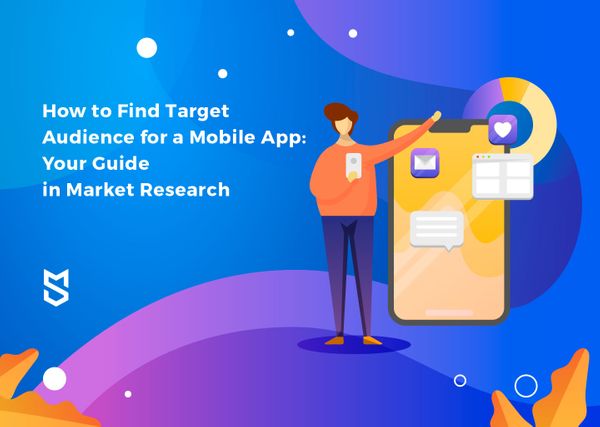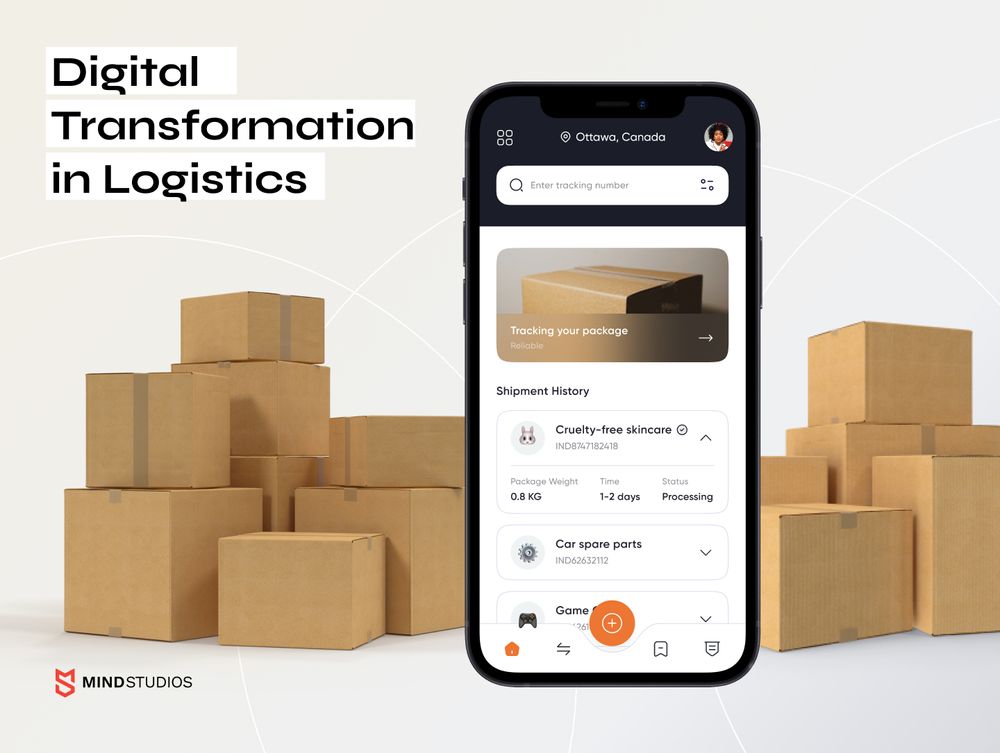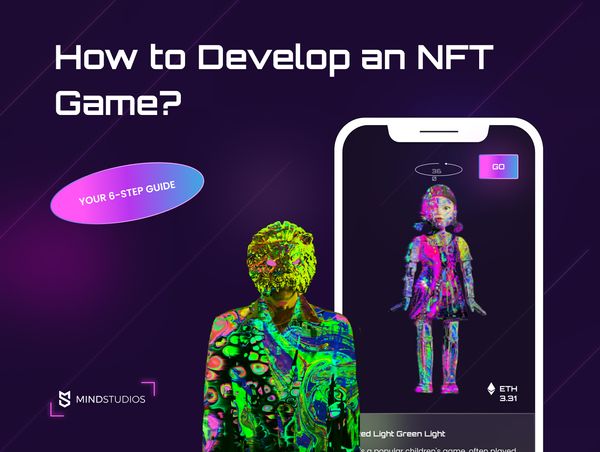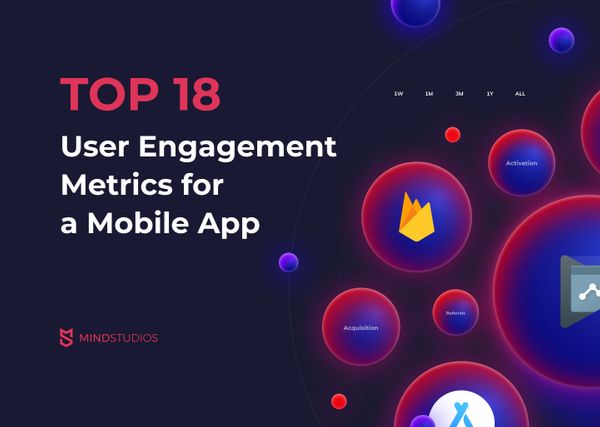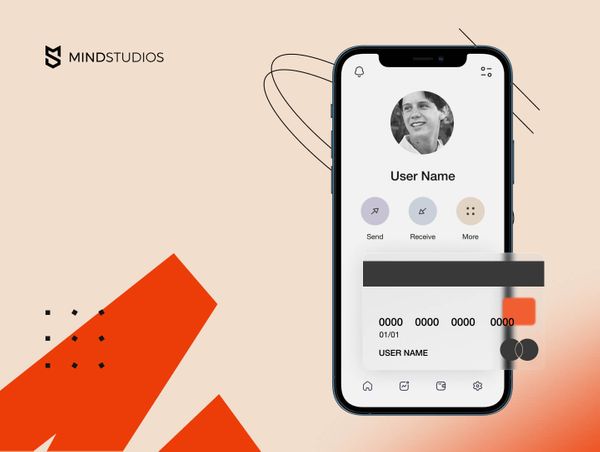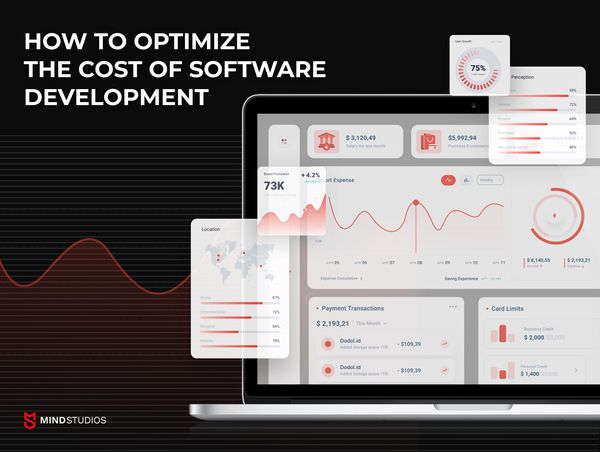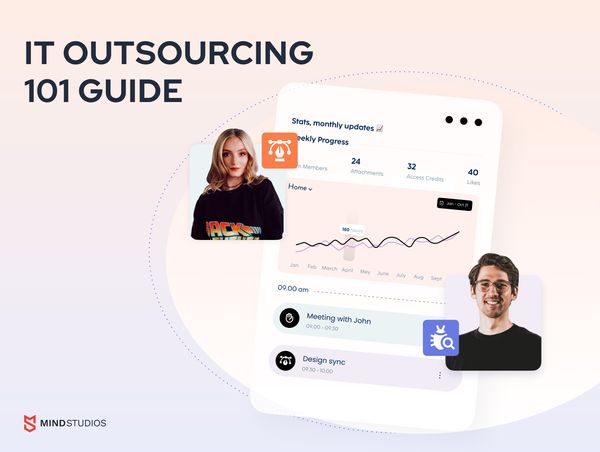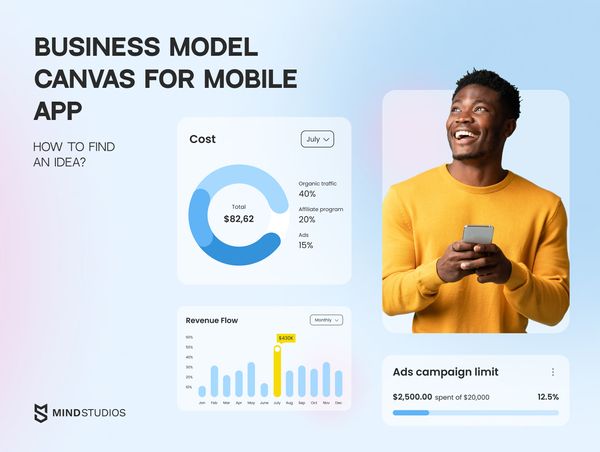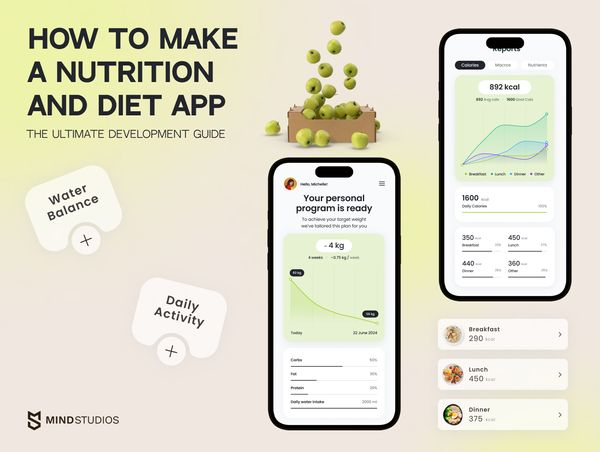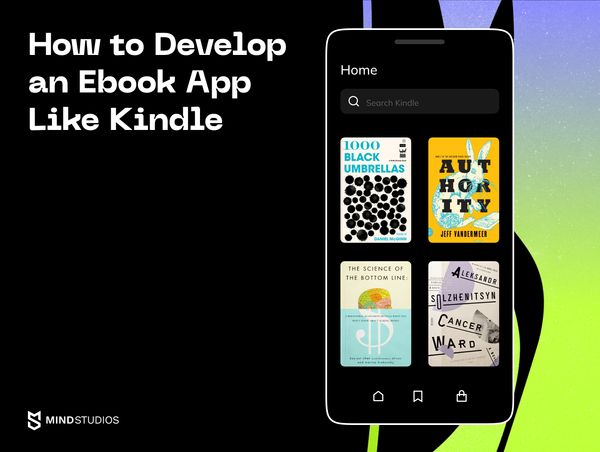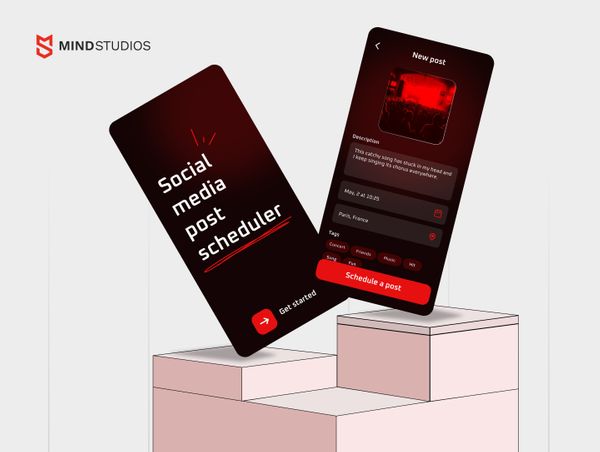
It’s hard to overestimate the importance of marketing for today’s business. Throughout our years in software and app engineering we’ve seen our share of marketing successes and blunders.
In this article, you will get insights on marketing of mobile apps and what to take into consideration at different stages of your app’s life.
Building a great app is only half the battle
The market of digital products — mobile apps and web products alike — is huge, yet the pool of possibilities is even bigger. Your app idea might be the best thing since sliced bread, but an idea isn’t enough to make it out there.
Unfortunately, building a superb app to bring your idea to reality isn’t always enough either.
As per the 2019 report by Startup Genome, eleven out of twelve true startups fail. Even venture-backed startups aren’t immune — 75% of those also tank within ten years.
According to Failory, the top two reasons for startup failure are:
- Lack of a product-market fit (34%)
- Marketing problems (22%)
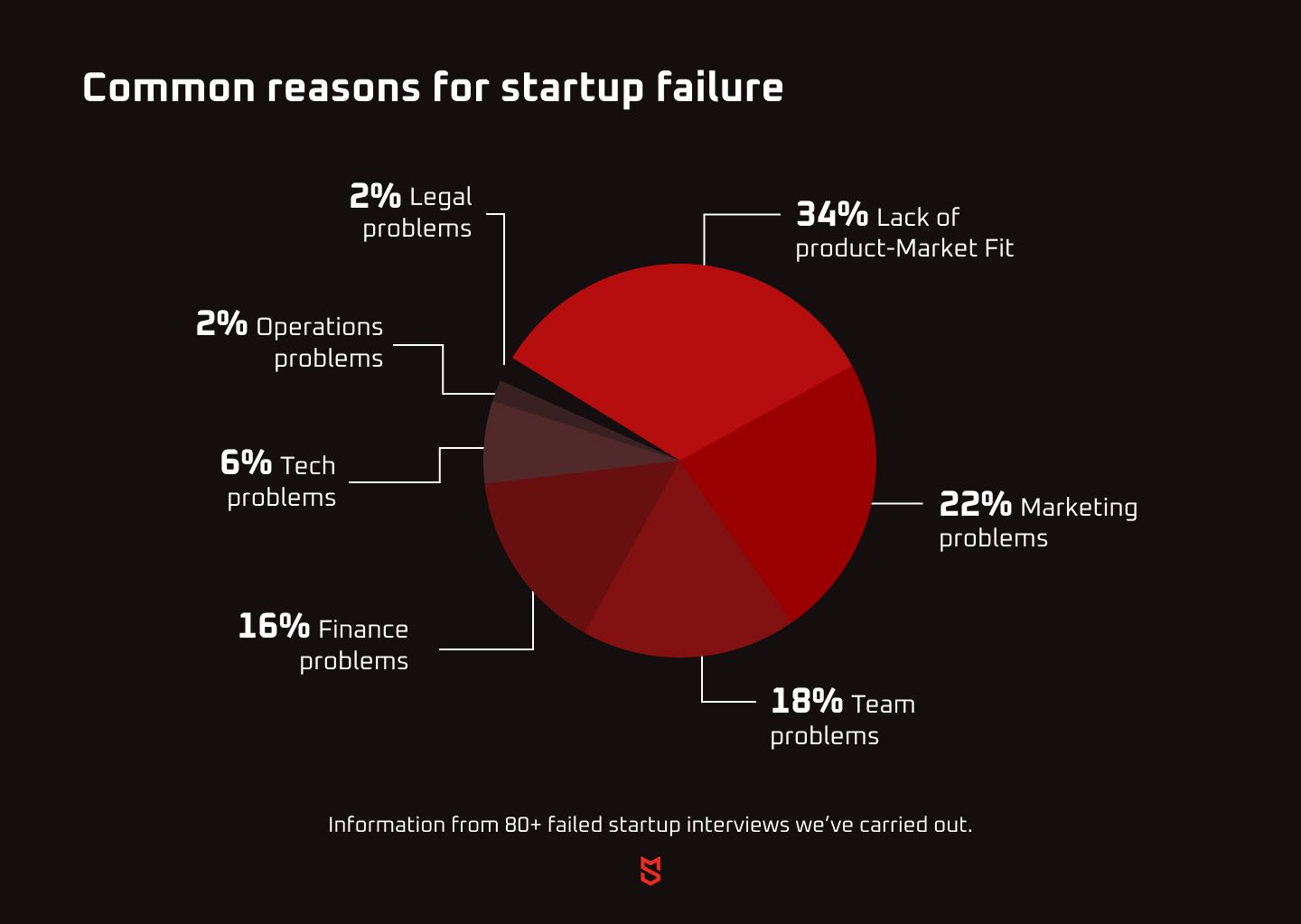
When it comes to outsourcing software development, the problem of product-market fit is faced at the very start of building your app.
If you decide to outsource your software development, a good software development company will offer you to go through idea validation and competitor and target audience research prior to actual development. These stages are aimed to make sure that your product fits the demand and therefore will find its target audience.
Startups that aren’t considered ‘true startups’ (meaning absolutely innovative) have higher success rate in general precisely because finding a product-market fit is easier for them.
The hard part starts when they need to attract that audience and keep it interested.
The concern of marketing is more acute for such startups as well as established businesses that decide to expand: by not being wholly unique and innovative they encounter higher competition. And attracting users can play a huge role when you decide to grow your app and attract investors.
This article is to help you navigate the stormy waters of the marketing sea.
Intro to mobile app marketing
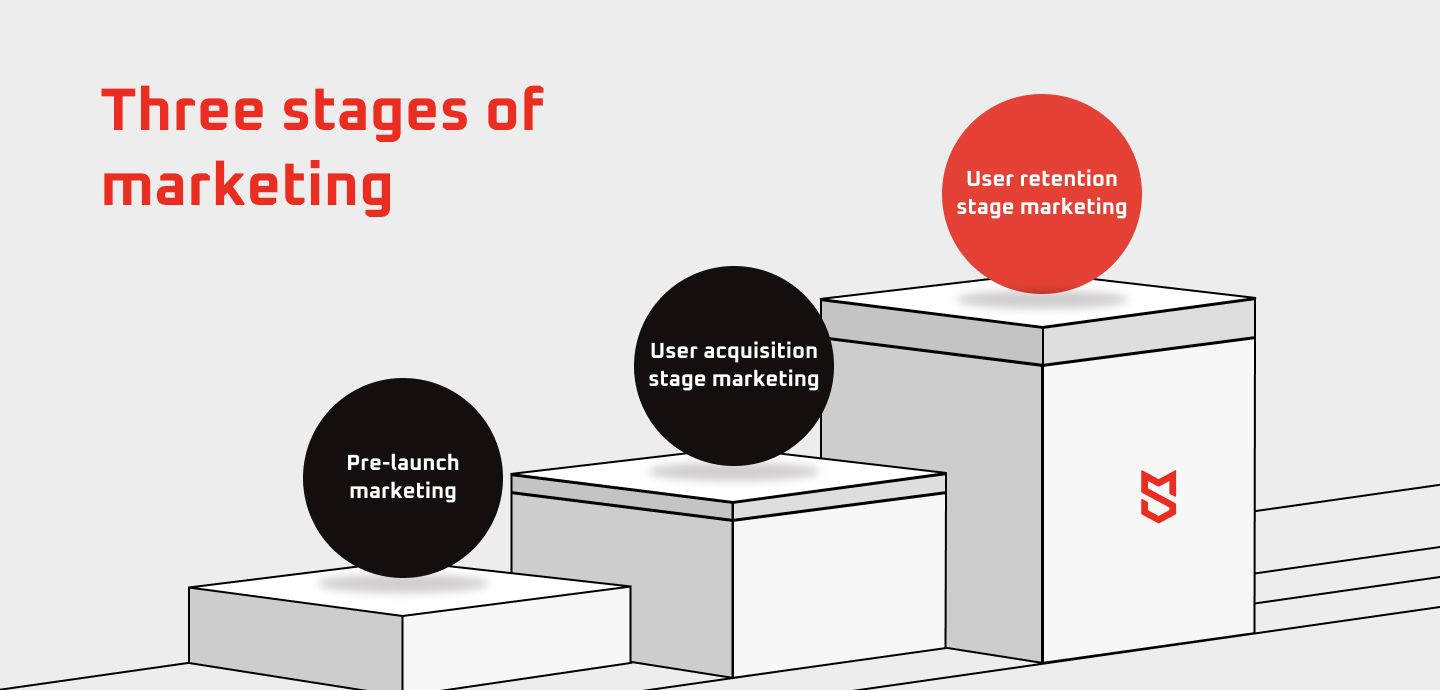
Before diving into mobile application marketing strategies you need to understand your market, your target audience, and your competitors, build a business plan. The efficiency of your marketing campaigns will depend heavily on how much data you collect and how you use it.
Understanding your target audience is of utmost importance, and it can make or break your product. A great example of this is the death of Quibi.
Quibi was a service of on-demand videos created with commute in mind — they were supposed to be short and created for mobile (i.e. possible to watch in both portrait and landscape mode). While a lot of things went sideways with Quibi, one of their biggest mistakes was marketing the app for the wrong audience and through the wrong channels.
Your campaign might be genius but if it doesn’t reach users who might be interested in your product — it’s useless.
The second important thing you need to know about creating a marketing plan for a mobile app is that you’ll need separate marketing campaigns for different stages of your app’s lifecycle.
Generally, we tend to set three major stages for marketing:
- Pre-launch marketing
- User acquisition stage marketing
- User retention stage marketing
Let’s talk a bit about marketing at each stage.
Pre-launch marketing
Pre-launch app marketing is aimed primarily at creating a buzz around your future product. Best-case scenario, if the mobile app promotion campaign at pre-launch stage is successful, you’ll have users looking forward to your app’s launch. These people will be your first users right after launch.
At this stage, you don’t have an app yet to show users. But there are tools you can use to get your to-be app out there and make people want to try it.
Landing pages
Landing page is the basic marketing strategy for soon-to-be released and recently released products. The benefits of having a landing page in your mobile app marketing plan are multiple. Landing pages are:
- Easy and take little time to create — a couple of days to a week
- Cheap compared to a full website or mobile app
- Searchable and can boost your brand recognition
The landing page’s searchability will depend on the quality of your search engine optimization (SEO). A well-optimized landing page will attract users searching for apps in your niche via Google and other engines.
When building a landing page for your mobile app, it’s vital to offer enough information and provide quality visuals. Hence, you should be launching a landing page when you’ve settled on your app’s interface design and core functionality, not before.
If you have a completed MVP, you can add links to app stores on your landing page.
A great feature to have on your landing page is a video teaser or ad clip introducing your app to users. You can also offer your users an interactive web-based mockup of the app.
Website and blog
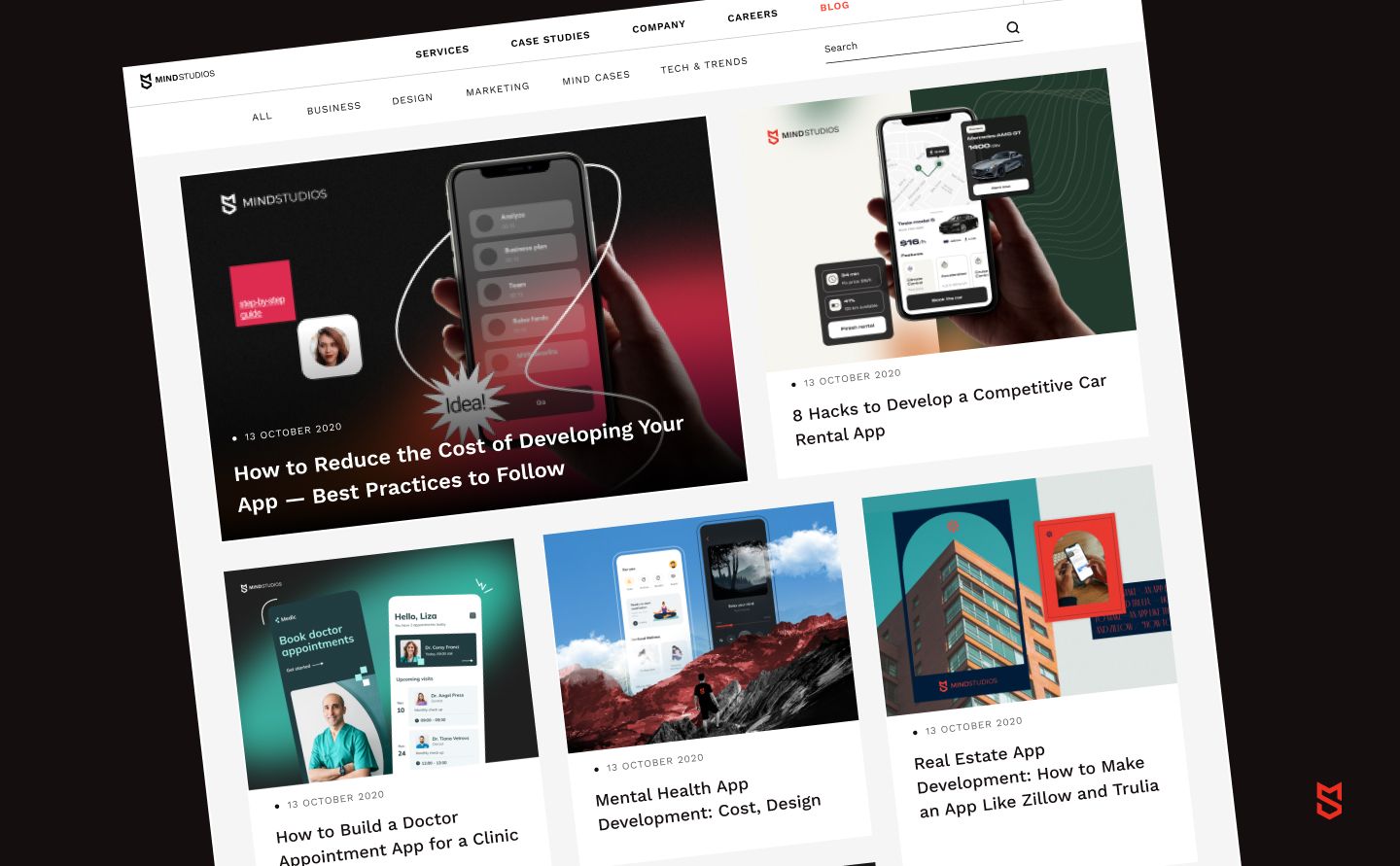
Whether yours is a startup or an established business and you’re making an app as a means to expand or as part of your digital transformation strategy, you probably have a website already. If you don’t, you need one.
Website is another possibility to make use of SEO practices. But compared to a landing page, a website offers more tools for engaging with your audience.
Whereas a landing page serves a purpose of promoting a single product or service, a website can host any and all information about your business, its values and goals. A website brings you closer to your audience.
To utilize a website to its fullest potential, it might be a good idea to host a blog there. On the blog, you can:
- Share news about your future app, which will keep your audience engaged
- Use quality SEO-optimized content to keep your ranking with search engines high
- Boost brand recognition continuously
Alternatively, you can have a blog for your product on a blog platform, though extra links from there to your website or landing pages might be seen as a hassle to some users.
Social media marketing
As far as marketing strategies for mobile apps go, social media campaigns are a must — according to Statista, in 2020, people around the globe spent about 145 minutes per day on social networking.
Social media networks are among those marketing tools that you as a mobile app owner should probably make use of as long as your app is on the market:
- At the pre-launch stage, social media content and ads will help make your brand recognizable.
- At the user acquisition stage, the ability of social media to share information will help spread the app at little to no price — your users, if they love your app, will share their love for it.
- At the user retention stage, continuous flow of content — posts, events, promo codes, giveaways — will keep your existing users engaged and will attract even more users from among existing users’ followers and friends.
Depending on your target audience and niche research, you’ll be able to choose the social networks that will benefit your business most, whether it be Facebook, Twitter, TikTok, or something else.
User acquisition stage marketing
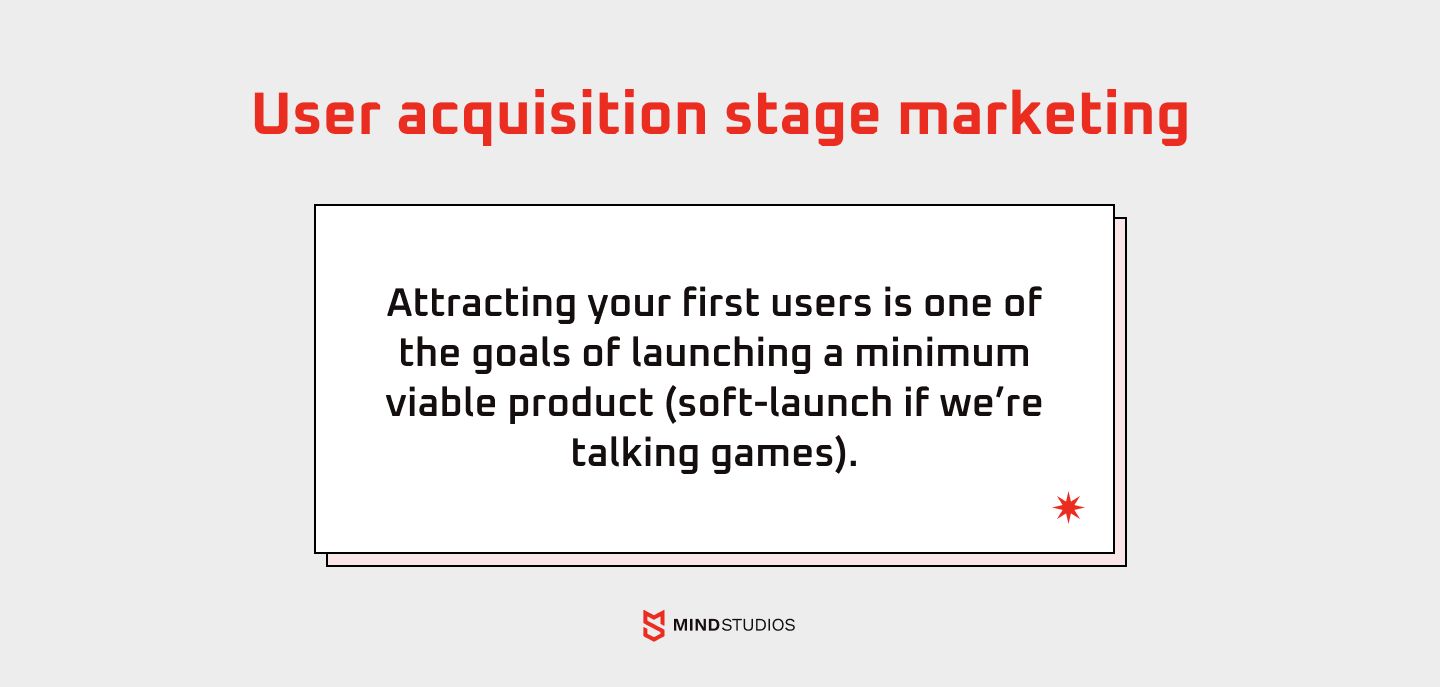
Attracting your first users is one of the goals of launching a minimum viable product (soft-launch if we’re talking games). Hence, the mobile app marketing campaign for user acquisition should start when you launch an MVP.
App store optimization (ASO)
ASO is the basic marketing strategy for user acquisition in mobile markets. It includes your app’s title, description, categories, tags, and images/video.
You need to approach your app’s page on Apple App Store and Google Play Store with care. The more precise description and tags you place on the app’s page the higher it will be on the list of search results. This will bring users to your app via search results.
However, it’s also essential to carefully craft imagery. Screenshots and video of your app’s interface might tip the scales for users deciding whether to install an app.
App store advertising
There are two ways to be featured at the top of search results in app stores:
- Paid advertising
- Editorial Choice
Paid advertising is simple enough — it’s an official channel for app store marketing. You pay to the app store and your app is displayed among top search results for your selected keywords. It will also have an indication that it’s an advertisement instead of an organic search result.
Editorial Choice is a more complex way to advertise your app as it requires you to go through the process of submitting your app to the app store’s editorial team for review. It might or might not pass and be featured, so it’s not guaranteed. However, it’s free and the “Editorial Choice” indicator near your app’s title is a sure way to attract users.
Video ads in other apps
Advertising a mobile app via other mobile apps is especially useful for games as people tend to play numerous mobile games simultaneously and they often watch ads for in-app rewards. More so if we’re talking about idle, casual, and hyper-casual games.
However, this marketing strategy also works for regular mobile apps. If your app is in categories with high variability like fitness, dieting, apps for content consumption (e-book reader apps, media players, image editors, etc.), advertising it in other apps is a solid option.
Outreach marketing
Outreach is the kind of marketing where you approach people and platforms with an audience that might be interested in your product. For example, niche publications or influencers — bloggers, celebrities, recognized industry leaders.
Influencer marketing is on the rise — according to predictions by the digital marketing agency Tinuiti, over 72% of marketers will be using influencer marketing in 2022. Professional e-sports players, musicians, and actors advertise products to consumers — fans and followers who trust them.
We had experience with influencer marketing on our project FLIIST, a web-based service to collect and share your favorite things from books and movies to places to visit and cuisine. FLIIST marketing team contacted multiple bloggers on YouTube, and this is what we’got:

To compare, customer acquisition cost we had in our Instagram campaign was $1.15 — significantly higher.
So what we’re trying to say here is that even similar outreach campaigns can bring varied results. Meaning, when running marketing campaigns you need to carefully monitor their results and drop those that don’t bring desired results.
Share functionality in your app
The ‘word-of-mouth’ marketing has been around centuries before the world became digital and it will most likely be around as long as humanity exists. And we tend to trust our friends even more than we trust Mariah Carey to recommend a mobile game to spend time and possibly money on.
The in-app option to share something from your app — an achievement, a product for purchase, a help request in a game — makes it simple and free to spread the word.
User retention stage marketing
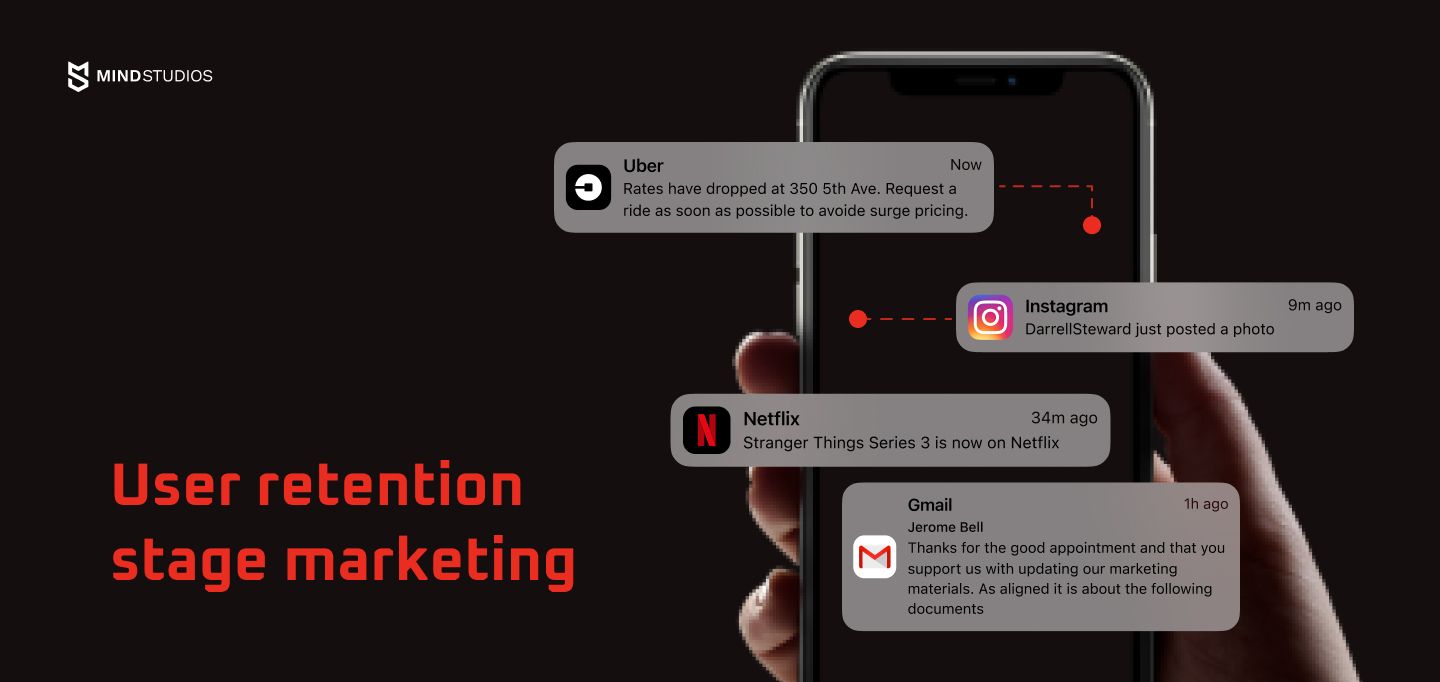
Retention is the number of users that still use your app after some time. Retention tends to fall with time and that’s fairly normal. However, you can boost it with marketing efforts.
The goal of marketing at this stage is to remind your users about your app and make them open it again and perform some actions. Here are some options for retention marketing strategies.
Make use of push notifications
This is the basics of mobile app development and marketing. Push notifications exist for the sole purpose of reminding your users that they have this app installed and they should launch it and do something in it.
Push notifications need to contain a short and enticing message with a call to action. They also should be configurable to not become an annoyance — too many will push users away from your app rather than pull them in.
Employ email marketing
There are over 4 billion people who use emails. That’s over half of the global population. Emails aren’t going to go out of use any time soon and therefore using them as a marketing tool is still a huge opportunity for businesses.
According to the DMA Marketer Email Tracker 2019, the return on investment (ROI) of email marketers grew to 1:42 in 2019. This means that for each dollar you invest in email marketing you can expect a return of $42 (though the report is in pounds sterling).
Specialists account this to the introduction of GDPR — thanks to these regulations, the emails companies collect now belong to users who are actively interested in receiving marketing offers and information from companies.
You can use emails for user acquisition as well as for retention.
Offer your users referral bonuses
Referral programs are a natural partner to your app’s shared functionality, which we’ve covered a bit above. By offering your users referral bonuses you give them a gentle push to share your app with their friends and acquaintances. And referral leads offer your business astonishing bonuses:
- They are 37% more likely to stay with your app longer, boosting your retention rate
- They have 16% longer lifetime value compared to users acquired via other marketing channels
- They offer 30% higher conversion rate
Among other things, referrals show that your users trust you and your product, which also positively impacts your brand image.
Communicate with your users
It might seem strange to consider communication a mobile apps marketing strategy. However, answering comments and ratings in app stores does boost your image. Additionally, being active on social media brings you to the top of your followers’ feeds, thus spreading your influence.
And live communication with your users will bring you valuable feedback that will help your future updates. The data from such communication should not be underestimated.
Measuring your marketing success
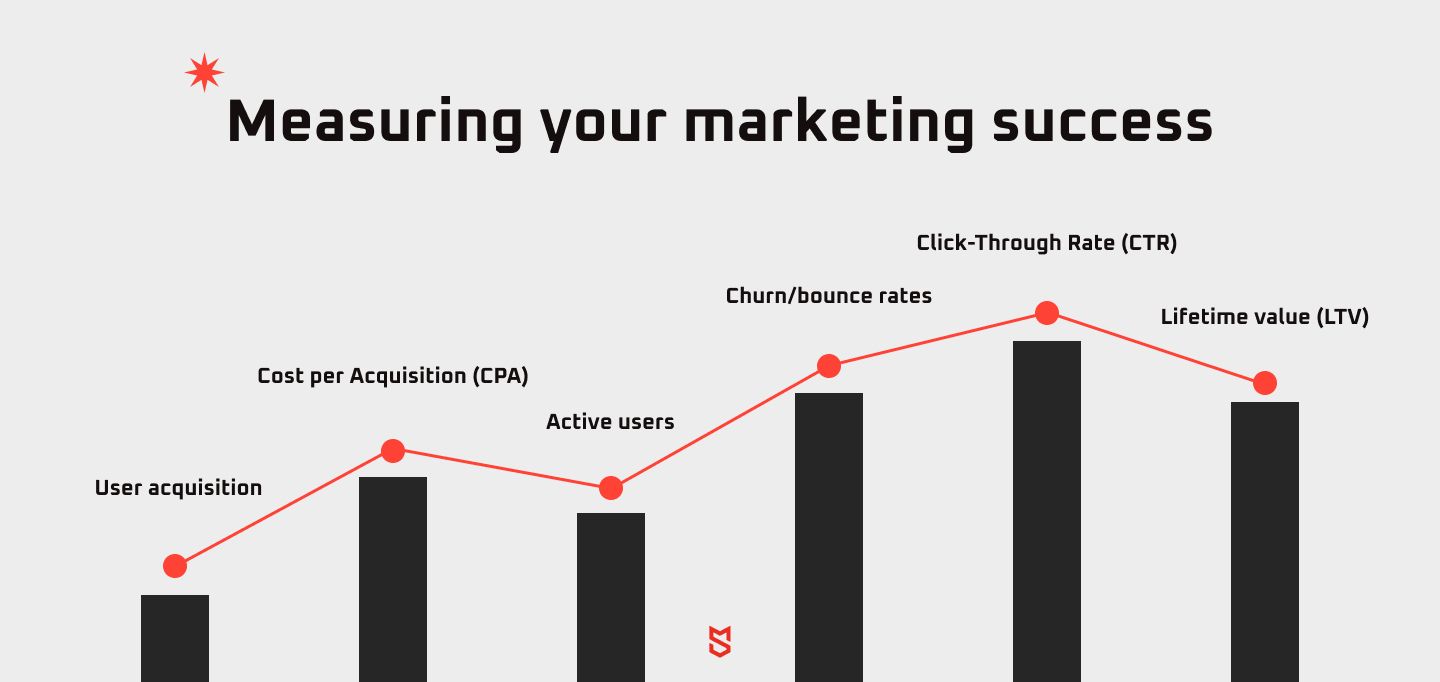
Very few marketing campaigns are completely free. Some of them are even quite expensive. Throwing money into everything and hoping for the best is hardly a sensible marketing plan for mobile applications.
For this reason, you need to implement assessments for your marketing campaigns. The most important user engagement metrics for a mobile app include:
- User acquisition metric shows you where your users come from — from organic search results or via a link from somewhere else.
- Cost per Acquisition (CPA) — the amount of money invested into the marketing campaign divided by the number of users the campaign acquired. This metric shows whether the campaign is successful.
- Active users (daily/weekly/monthly) can shine some light on the performance of your push notifications alongside the app’s performance.
- Churn/bounce rates show how many users stopped using your app and at what point. These metrics will show you weak points in your app. If churn rate lowers after a certain campaign it also means that the campaign is successful.
- Click-Through Rate (CTR) — the number of clicks on your ad divided by the number of times the ad is shown.
- Lifetime value (LTV) — how much money each user spent on your app during the time they used it.
Some analytics are available as part of the app stores’ features — both Google and Apple stores offer a number of analytical tools. Other analytics can be tracked via your app’s functionality; you’ll need to add such functionality to your app’s requirements. Finally, some trackers are third-party.
Possible pitfalls in marketing an app launch
Many things in marketing are subject to trial and error. However, there are also recommendations that you can apply to your marketing which will make campaigns less prone to errors.
Don’t overpromise
Overpromising is a fairly widespread mistake in software development, even among seasoned business owners. Born out of excitement or inexperience in mobile app development process, it can take a form of overpromising functionality and/or release dates.
The best industry practice regarding setting realistic release dates is to discuss your app in detail with a development company you’re working with. Experienced specialists can assess the time necessary to implement each feature and they can predict possible launch with fairly high precision.
At the same time, everyone knows that on the highly competitive market of mobile apps, the earlier you launch, the more chances for success you have.
To launch earlier, discuss with your team the release of a minimum viable product, or beta-launch if we’re talking games.
MVP should also be carefully crafted — you’ll need to prioritize features and choose only those that your app can’t launch without. After an MVP, you and your team will also need to release updates frequently enough to keep users engaged. New features will enrich your marketing campaigns and keep your users looking forward to updates.
Be consistent in your language
Language consistency is often an afterthought among software developers, though any good marketing specialist will tell you of its importance.
When crafting your marketing plan to launch an app, you need to keep the advertising messages similar in language — between channels, campaigns, and with the in-app language as well. Inconsistency will be confusing for users and may cost you dear in the end. We recommend having a style guide to set the tone of voice and brand style of communication.
If you have additional questions about digital marketing for mobile apps, leave us a comment or contact our team of specialists.

